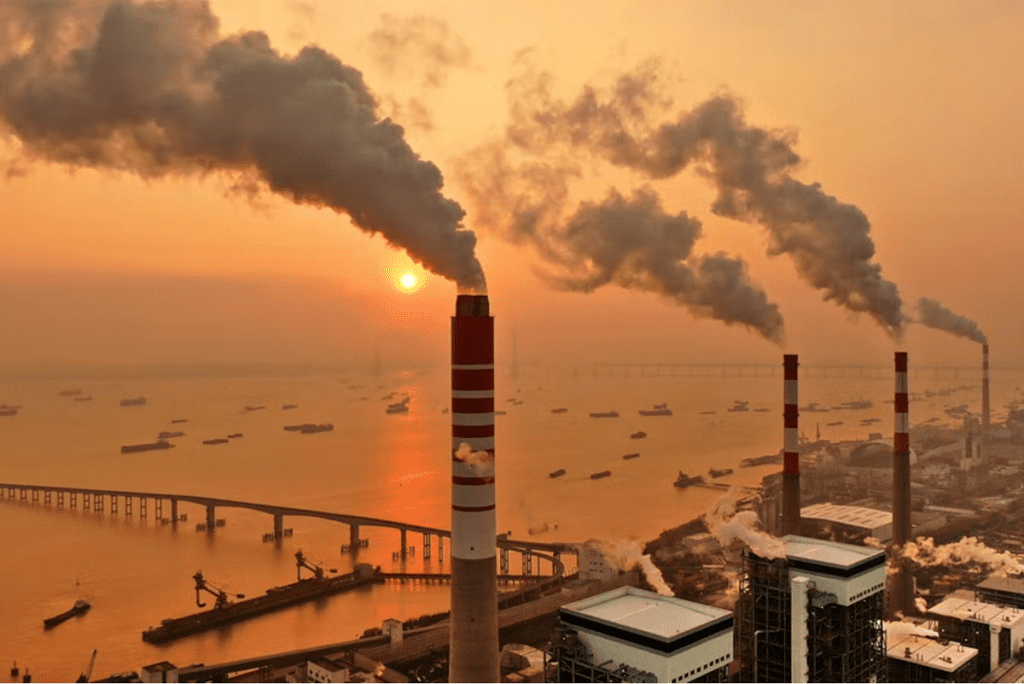This offers a potentially greener and more financially attractive alternative to energy transition pathways Asia is currently considering. These include switching from coal to gas and more recently, employing nascent technologies like ammonia co-firing and carbon capture and storage (CCS).
“What’s so bad about coal-fired power plants? It’s just coal. Everything else is a useful asset. Whether it’s the generators, grids, people who work there, the land that they use – all that can be repurposed,” said Randolph Brazier, global head of clean power systems from HSBC at the whitepaper’s launch event.
The paper noted that while facilitating the early closure of coal-fired power plants has been shown to be financially possible, “the inclusion of repowering and repurposing should also be on the table.”
The study explicitly ruled out considering conversions to unabated natural gas as “clean repowering”, since it “still emits unacceptable levels of carbon dioxide emissions when combusted”, and carries significant environmental risks, like methane leaks, despite burning more cleanly than coal.
While ammonia co-firing was not explicitly ruled out, the paper stated this method might be less environmentally and commercially viable, given the low full-cycle efficiency of ammonia, referencing the energy-intensive process of producing ammonia.
“These challenges render these options less competitive than recommended technologies such as next-generation geothermal, concentrated solar power, or advanced nuclear reactors,” said the paper, which stressed the importance of avoiding carbon lock-ins or “suboptimal solutions”.
Repowering is not a novel concept, but has not achieved widespread adoption.
The US and Poland have been leading the push for coal-to-nuclear repowering projects, with the TerraPower Natrium project in Wyoming, US and the ZE PAK project in Patnow, Poland.“Serious feasibility studies” are also underway in countries across Eastern Europe, Canada and China, the report noted.
At least one advanced coal-to-geothermal repowering project is currently being developed in Texas. Coal-to-solar and the conversion of existing coal generators to spinning generators that maintain grid stability, also known as synchronous condensers, have also started in Canada and the US.
Repower Initiative, the international non-profit which authored the whitepaper, said it will begin the process of mapping all existing coal-fired power plants sites to consider possible repowering options at each site, including the benefits of maintaining existing transmission infrastructure.
Apart from repowering options explored in the whitepaper, technical consultancy Quantified Carbon’s founder Staffan Qvist, who oversees the initiative, said that they are open to other options and are “always scanning the horizon of tech that is being developed.”
HSBC’s global head of sustainability and partnerships Jenny McInnes said the initiative “has the potential to be a real game-changer” and has already begun to shift the discourse around early coal retirement.
“By identifying sites where repower can reduce costs, deliver reliable energy now and in the future, and support local communities – in the countries and regions where it is needed most urgently – we have the potential to accelerate our transition to net zero,” said McInnes.
The Repower Initiative will initially focus its research on China, Indonesia, India, and South Korea, according to its press statement. It will also prioritise countries targeted by the Asian Development Bank’s Energy Transition Mechanism and Just Energy Transition Partnerships, a funding package financed by wealthy donor nations and private investors which HSBC is involved in.
Planning ahead and greenwash risks
Qvist said repowering is an “augmentation” and an add-on to existing coal phase-out mechanisms, including a novel class of carbon credits that can be produced from the early retirement of high-emitting assets, which Singapore’s central bank introduced last year.
“One thing you have to do, though, is to think ahead. Say you want to shut off your coal plant ten years from now, if you’re planning to reuse some equipment, you would run it differently,” he said. For instance, if a coal site has a lot a land, its owners could start installing solar panels or testing the feasibility of incorporating geothermal energy early on.
When asked if repowering might offer a perverse incentive for utilities to continue expanding their coal capacity, Qvist acknowledged that there is a risk of greenwash where someone might build a new coal power plant, then announce that they would repower it five or ten years later.
“This is what people are doing with natural gas plants now, saying, ‘Oh I’m going to burn hydrogen ten years from now.’ That is a greenwashing risk that we really have to be vigilant about because repowering categorically does not support the construction of new coal-fired power plants, ever.”
While the concept has not gained much traction in Japan and South Korea, Qvist said that it has been added to Indonesia’s national energy policy and he is hopeful it could be included in China’s next five-year plan. There are plans as well to engage Vietnam in the future, he added.
Source link : https://www.eco-business.com/news/hsbc-backs-alternative-way-to-clean-up-coal-plants-in-asia/
Author :
Publish date : 2024-06-06 07:39:00
Copyright for syndicated content belongs to the linked Source.
